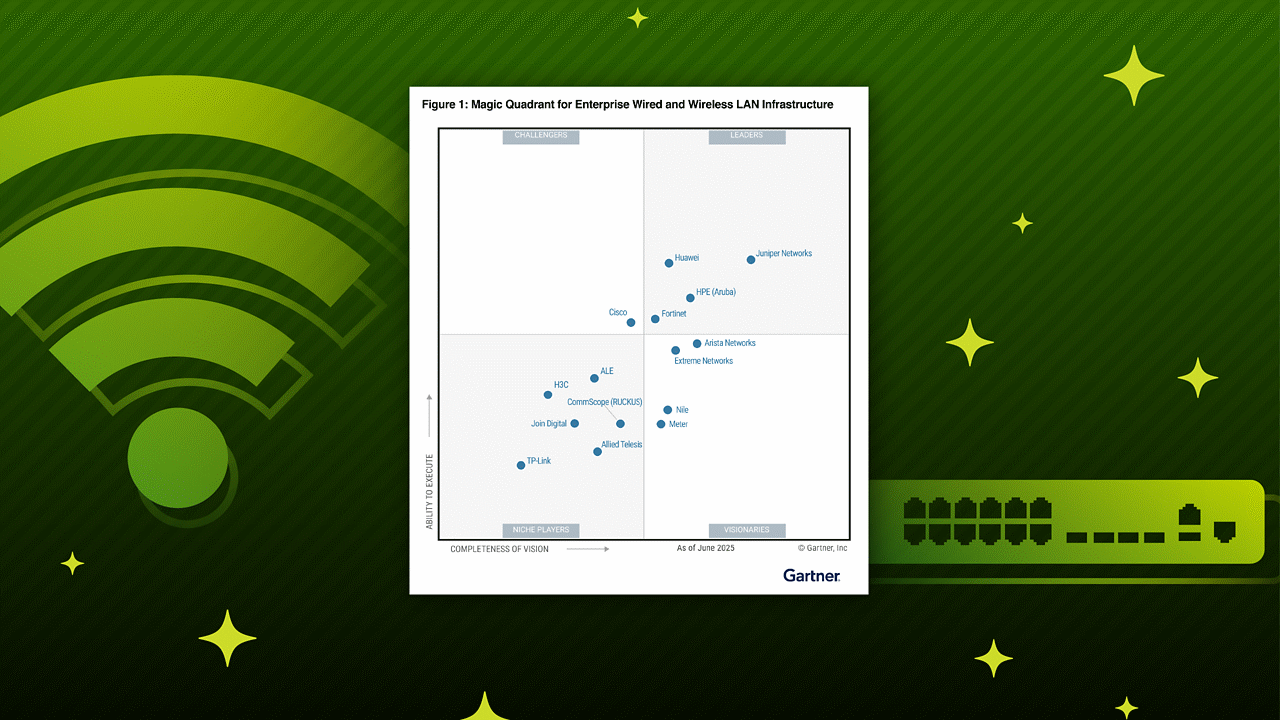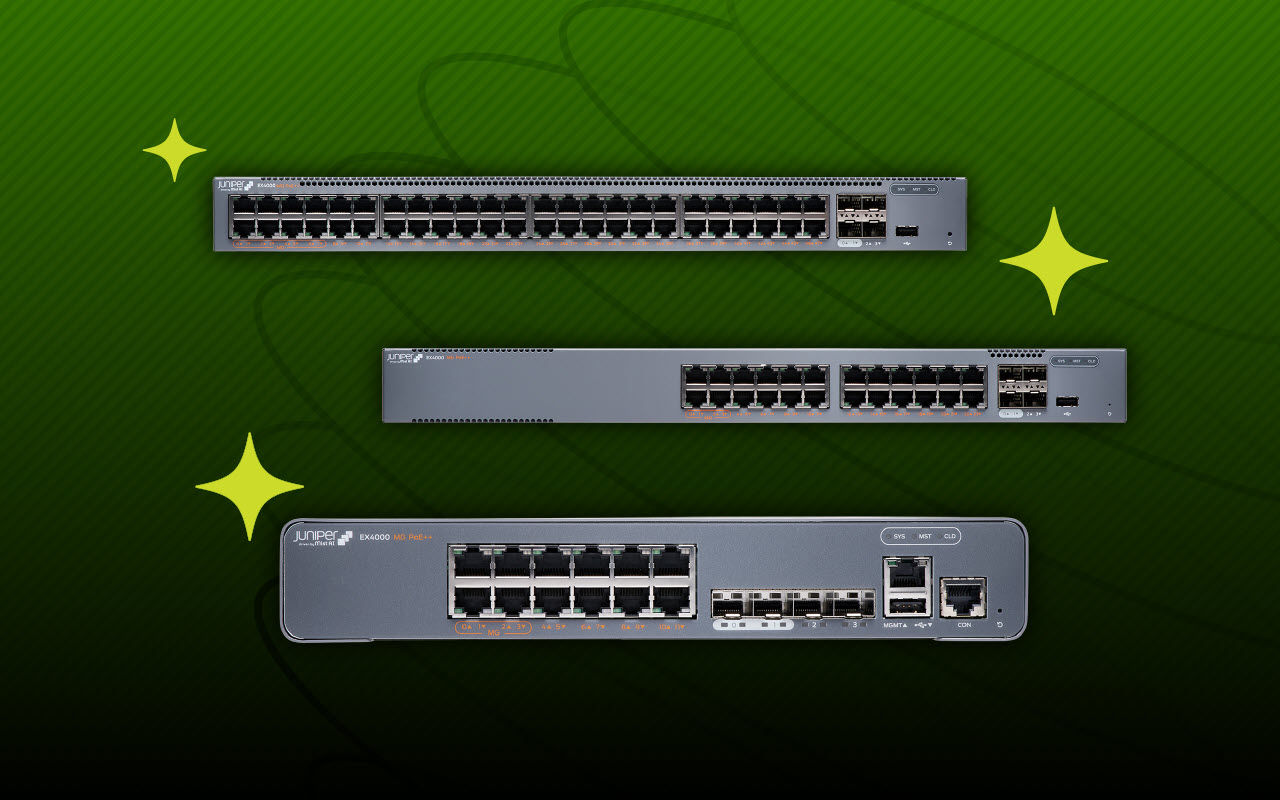Security Director Datasheet
Download DatasheetProduct overview
Juniper Security Director provides extensive security policy management and control through a centralized, web-based interface. It enforces policies against emerging and traditional threat vectors, simultaneously protecting physical, virtual, and containerized firewalls on premises and across multiple clouds. It provides detailed visibility into application performance and reduces risk, enabling users to diagnose and resolve problems quickly.
Providing extensive scale, granular policy control, and policy breadth across the network, Security Director delivers network-wide visibility and policy management for deployments on premises, in the cloud, and as a service.
Administrators can quickly manage all phases of the security policy life cycle for firewalls and next-generation firewall services, including Zero Touch Provisioning and configuration. They also gain insight into sources of risk across the network—all from a single user interface.

Product description
Network security management is how administrators operationalize their firewall architecture; provide visibility across individual deployments, policies, and traffic; and gain insight from threat analytics across the entire network traffic.
It can be a curse if management solutions are slow or restricted in their level of granularity and visibility, or a blessing with intuitive wizards, time-saving orchestration tools, and insightful dashboards. Juniper® Security Director manages security policy for all physical, virtual, and containerized firewalls. Through an intuitive, centralized, web-based interface, Security Director reduces management costs and errors by providing visibility, intelligence, automation, and effective security across Juniper SRX Series Firewall deployments in both public and private clouds concurrently.
Security Director Cloud
Security Director Cloud is Juniper’s simple and seamless management experience delivered in a single UI to connect customers’ current deployments with their future architectural rollouts. Management is at the center of the Juniper Connected Security strategy and helps organizations secure every point of connection on their network to safeguard users, data, and infrastructure.
Organizations can secure their architecture with consistent security policies across any environment—on-premises, cloud-based, cloud-delivered, and hybrid—and expand Zero Trust to all parts of the network—from the edge all the way into the data center and to applications and microservices. With Security Director Cloud, organizations have unbroken visibility, policy configuration, administration, and collective threat intelligence all in one place.
We meet our customers where they are on their journey, help them leverage their existing investments, and empower them to transition to their preferred architecture at a pace that is best for business by automating their transition with Security Director Cloud.
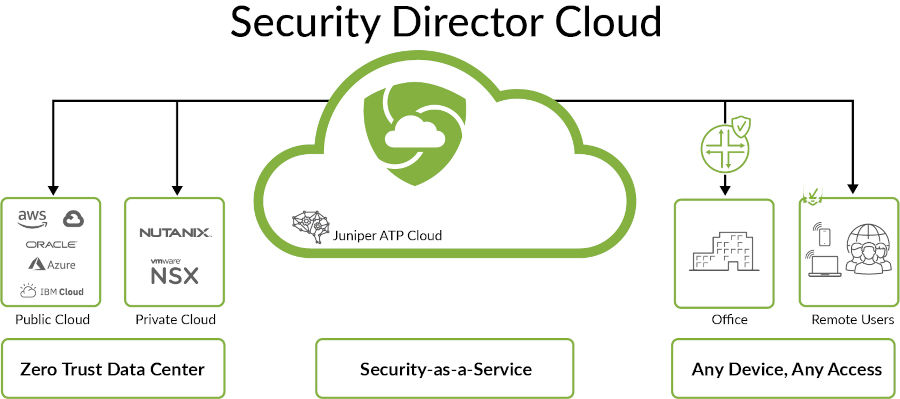
Figure 1: Security Director Cloud architecture
The Security Director dashboard provides customizable, information-rich widgets offering visually intuitive displays that report security device status at a glance. A pallet allows you to easily navigate between firewall, threat, intrusion prevention system (IPS), application, throughput, and device-related information to create a customized view of your SRX Series Firewall environment.
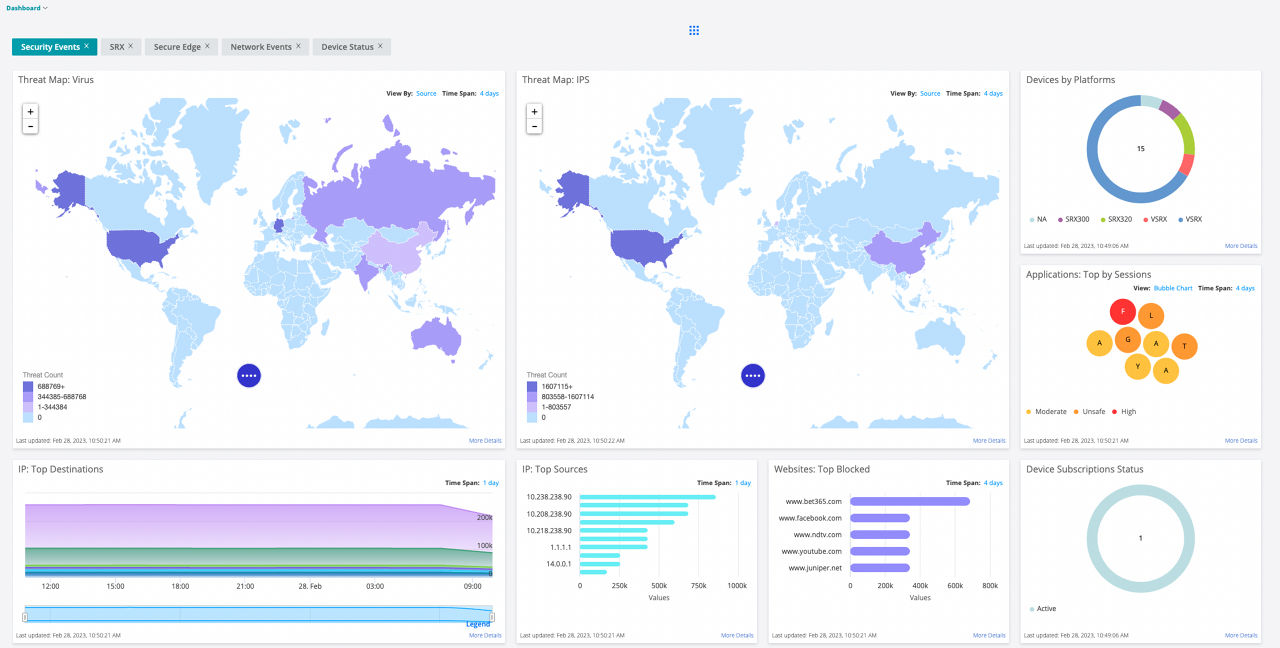
Figure 2: Security Director dashboard
Via the dashboard, you can quickly determine which SRX Series devices have generated the most alarms or consume the most CPU cycles or RAM for a specific time period.
By drilling down on widgets, administrators can sort and search various events to effortlessly obtain detailed information such as top viruses blocked, top destinations, top sources, etc., to ensure the network is safe.
Security Director is an innovative solution for managing the application, user, and IP environments. Network administrators can choose between different views to see how applications and users affect the network, observe bandwidth utilization levels, or determine the number of sessions created. Admins can view granular usage details, such as the riskiest applications. Top talkers are easy to identify and remediate. You can also compare different time frames and determine when utilization is typically at its peak.
With most security management solutions, administrators must run a report or open several tabs to find the applications or users they want to manage. Then they must manually create the required firewall rules, determine where to place them, and hope they don’t conflict with any existing rules, creating a host of new problems. This task is an exceptionally tedious, time-consuming, and error-prone process.
Security Director is extremely user-friendly and does not require users to run multiple reports, open multiple tabs, and manually analyze the data to find answers. Instead, Security Director allows administrators to quickly find crucial answers at a glance, without digging through reports.
Using the actionable intelligence that Security Director provides, administrators can select one or more applications or user/user groups from the Application Visibility or User Visibility charts, then simply select “Block.” Security Director automatically creates the requested rule or rules and deploys them in the optimal location within the rules base. It helps avoid anomalies and takes the guesswork out of managing the application and user environment.
Security Director also provides actionable intelligence when it comes to threat mitigation. For example, the Threat Map widget shows the number of IPS events detected per geographic location, giving you immediate awareness of threat activity and providing the means to remediate with one click.
Security Director aligns with real-world operational needs while supporting security at scale. It has AI-native, persona-based monitoring, offering tailored visibility based on the user role. Whether you're in operations, security, or leadership, the experience is now more focused and actionable. A new security-focused landing page provides an immediate view of posture, threat trends, and key insights, helping teams prioritize faster and stay ahead of emerging risks. These updates are designed to reduce alert fatigue and help each persona zero in on what's most relevant to improve situational awareness and decision-making across teams.
Security Director also monitors advanced security services, giving users a broader and more granular view of policy enforcement and infrastructure health. This enhanced observability helps teams detect issues proactively. To simplify incident response, we enhanced the ability to troubleshoot effectively. This helps streamline RCA (root cause analysis), improves cross-team collaboration, and reduces MTTR (mean time to resolution). Whether you're tracking down a policy misconfiguration or diagnosing connectivity issues, troubleshooting is faster and more intuitive.
Security Director also makes it easier to onboard SRX firewalls with fewer steps, clearer guidance, and an improved way to templatize effective configurations. This is especially critical for customers deploying at scale across distributed sites. In addition, enhanced Day 2 operational support helps teams maintain and evolve their deployments more effectively—from policy updates and monitoring to device health and life cycle visibility.
With Security Director, Juniper is delivering the visibility, simplicity, and control that today’s security teams need—all from a single, unified cloud platform.
Juniper Secure Edge
Juniper® Secure Edge secures workforces anywhere with the fast, reliable, and secure access they need. It delivers full stack SSE capabilities, including FWaaS, SWG, CASB with DLP, ZTNA, and advanced threat protection to protect access to web, SaaS, and on-premises applications, providing users with security that follows them wherever they go. Juniper meets customers where they are and takes them where they want to go by leveraging what they have and extending their Zero Trust initiatives to a cloud-delivered architecture without breaking the bank or their ops team.
Juniper Secure Edge, managed by Security Director Cloud, uses a single policy framework that enables security policies to be created once to follow users, devices, and data wherever they go.
Customers don’t have to start from scratch when adopting cloud-delivered security. With our three-click wizard, customers can easily leverage existing campus edge policies and translate them into an SSE policy. Because it uses a single policy framework regardless of the deployment model, Secure Edge applies existing security policies from traditional deployments to its cloud-delivered model in just a few clicks, reducing misconfigurations and risk.
Whether securing remote users, campus and branch locations, private cloud, public cloud, or hybrid cloud data centers, Juniper provides unified management and unbroken visibility across all architectures. This makes it easy for ops teams to easily and effectively bridge their current investments with their future architectural goals, including SASE. Customers can manage security anywhere and everywhere, on premises, in the cloud, and from the cloud, with security policies that follow users, devices, and data wherever they go—all from a single UI.
Users have fast, reliable, and secure access to the data and resources they need, ensuring great user experiences. IT security teams gain seamless visibility across the entire network while leveraging their existing investments, helping them transition to a cloud-delivered architecture at their own pace.
Juniper Secure Edge provides consistent security policies that follow the user, device, and data without having to copy over or recreate rule sets. It's easy to deploy cloud-delivered application control, intrusion prevention, content and web filtering, and effective threat prevention without breaking visibility or security enforcement.
Juniper has been consistently validated by multiple third-party tests as the most effective security technology on the market for the past four years, with 100% security efficacy across all use cases.
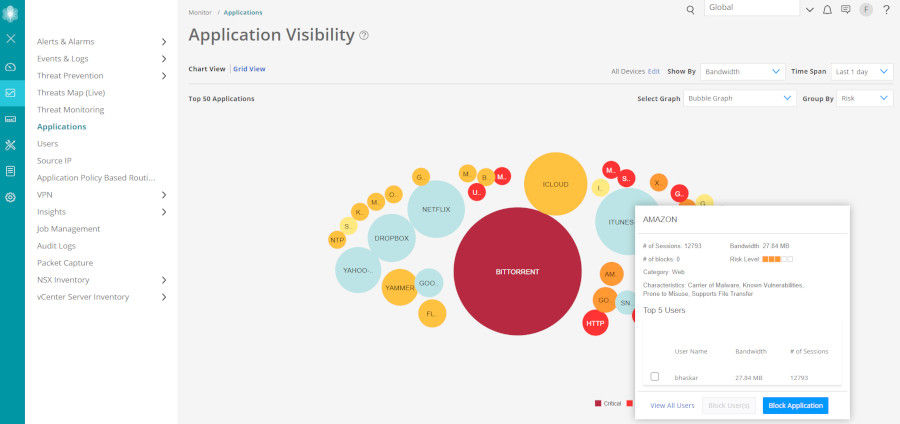
Figure 3: Application Visibility dashboard
Security Director Insights
Security Director Insights expands end-to-end visibility by correlating and scoring threat events across the complete security stack. It offers a timeline view mapped to the MITRE attack framework so administrators can focus on the highest-priority threats. It unifies visibility across the network by correlating threat detection information, including detections from other vendor products, and enables one-touch mitigation to address gaps in defense quickly.
Security Director Insights empowers organizations to automate threat remediation and microsegmentation policies across the entire network with Security Director’s built-in orchestration.
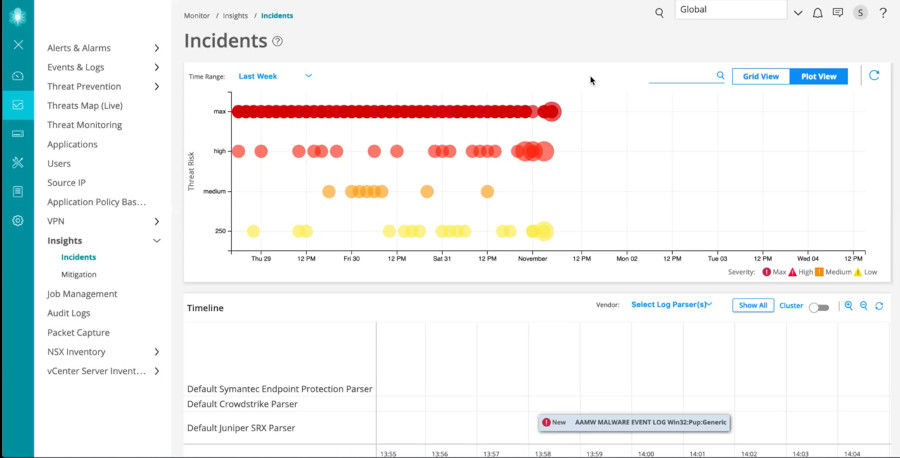
Figure 4: Security Director Insights dashboard
Security Director Insights collects and automatically correlates data across multiple security layers—email, endpoint, server, cloud workloads, and network—so threats are detected faster and security teams can improve investigation and response times. It also uses mitigation rules to prevent future attacks.
With Security Director Insights, customers can:
- Understand when and where an attack is happening by using it to correlate and prioritize security events from multiple security solutions across various parts of the network
- Use custom threat and incident scoring so that security teams respond to and can mitigate attacks that have the potential to do the most harm to the business
- Mitigate active threats across the network—on Juniper SRX Series Firewalls—with one click
Customers can use Security Director Insights to track attack indicators across their networks, from client to workload, regardless of which vendor product in their environment made the detection.
In Security Director, Policy Enforcer provides a simplified user-intent-based threat management policy modification and distribution tool.
Security Director provides automated enforcement and policy orchestration that allows updated security policies to deploy across Juniper SRX Series Firewalls. The software helps automate threat remediation and microsegmentation policies across your entire network.
An intuitive user interface within Security Director allows administrators to control and modify network elements, enforcement groups, threat management services, and profile definitions.
Using Policy Enforcer, Security Director automatically updates policies based on the threats that Juniper Advanced Threat Prevention (ATP) identified. Additionally, SecIntel feeds are also available with the Policy Enforcer integration. Policy Enforcer distributes updated policies to enforcement points, such as firewalls, ensuring real-time network protection.
Firewall Policy Analysis
With Firewall Policy Analysis, you can gain visibility into network anomalies by scheduling reports showing shadow or redundant firewall rules. Firewall Policy Analysis makes recommendations to fix all reported issues and uses automation to optimize your rule base.
Firewall Policy Analysis eliminates the need to run a monthly or quarterly anomaly report and fix all issues manually. Run the report once, and Security Director will adapt.
Security Director
Security Director is also available as an on-premises offering, in addition to the SaaS Security Director Cloud offering.
The on-premises version is based on Security Director Cloud, so it provides the same rich features, functionalities, monitoring, analytics, etc, with the same look and feel.
More information about Security Director is available at:
Juniper Security Director Documentation | Juniper Networks.
| Features | Description | Benefits |
| Secure Edge | Delivers full stack Security Service Edge (SSE) capabilities, including FWaaS, SWG, CASB with DLP, ZTNA, and advanced threat protection to protect access to web, SaaS, and on-premises applications and provide users with security that follows them wherever they go | Enables administrators to seamlessly secure their remote workforce with consistent security policies that follow the user wherever they go |
| Security Director Insights | Collects and automatically correlates data across multiple security layers—email, endpoint, server, cloud workloads and network—so threats are detected faster and security teams can improve investigation and response times. Prevents future attacks with mitigation rules |
|
| Policy Enforcer | Creates and centrally manages security policies through a user intent-based system, evaluating threat intelligence from multiple sources while dynamically enforcing policies in near real time across the network. Enforces threat management policies at firewalls and access switches, aggregating threat feeds from Advanced Threat Prevention Cloud, SecIntel, and on-premises custom threat intelligence solutions with allow list and blocklist support |
|
| Firewall policy analysis | Provides the ability to schedule reports that show shadow or where redundant firewall rules are and recommends actions to fix all reported issues | Allows administrators to maintain an efficient firewall rule base by quickly identifying ineffective and unnecessary rules |
| Firewall rule placement guidance | Upon creating a new rule, analyzes the existing firewall rule base to recommend optimal position and application | Significantly reduces shadowing rules |
| Metadata-based policies | Enables administrators to create object metadata-based user-intent firewall policies | Simplifies policy creation and maintenance workflows. In addition to making policies more readable from a user intent perspective, this feature streamlines firewall troubleshooting |
| Dynamic policy actions | Enables security administrators to initiate different actions, including firewall, logging, IPS, URL filtering, and antivirus, among others, under different conditions | Reduces the time required to adjust the organization’s security posture under different conditions and streamlines threat remediation workflows |
| Firewall policy hit count | Shows hit counts for each firewall via meters and filters that display which rules are hit the least. Security Director also can keep a lifetime hit count | Allows administrators to assess each firewall rule’s effectiveness and quickly identify unused rules, resulting in a better managed firewall environment |
| Live threat map | Displays where threats originate in near real time and allow you to take action to stop them | Provides near-real-time insight into network-related threats. Allows you to block traffic going to or coming from a specific country with a single click |
| Security Assurance | Automate security policies across the network, including firewalls and routers, for accurate enforcement, consistent security, and compliance | Guarantee that security rules are always placed correctly for intended effectiveness |
| Innovative application visibility and management | Provides an easy and intuitive way to see which applications use the most bandwidth, have the most sessions, or are most at risk. Know which users are accessing nonproductive applications and how much. Top talkers are displayed in an easy to understand manner. Block applications, IP addresses, and users with a simple click | Delivers greater visibility, enforcement, control, and protection over the network |
| Simplified threat management | Reports where threats are originating and where they are going via a global map. Blocking a country is easy; simply mouse over the country to take action | Provides insight needed to manage network-related threats effectively. Allows you to block traffic going to or coming from a specific country with a single click |
| Snapshot support | Allows users to snapshot, compare, and roll back configuration versions | Simplifies configuration changes and allows recovery from configuration errors |
| Policy lifecycle management | Provides the ability to manage all phases of security policy life cycles, including creating, deploying, monitoring, remediation, and maintenance |
|
| Drag-and-drop | Allows firewall, IPS, and NAT rules to be reordered by simply dragging them to a new location | Enables firewall, IPS, and NAT objects to be added or copied by dragging them from one cell to another or from a pallet located at the bottom of the policy table |
| VPN auto-provisioning and import | Simply tell Security Director which VPN topology to use and which devices you want to participate in the topology, and Security Director will auto-provision the tunnels. If you have an existing Juniper VPN environment, Security Director can import the VPNs to provide an easy and effective way to manage them. | Makes preexisting SRX Series Firewall VPNs easier to manage |
| Role-based access for policies and objects | Allows devices, policies, and objects to be placed within domains and assigns read/write permissions to a user | Provides customers a way to segment administrative responsibility for policies and objects |
| REST APIs for automation | Provides RESTful APIs used in conjunction with automation tools | Automates configuration and management of physical, virtual, or containerized SRX Series Firewalls |
| Logging and reporting application | Enables logging and reporting |
Direct access to Security Director policies and objects:
|
Ordering information
To order Juniper Security Director and access software licensing information, please visit the How to Buy page at https://www.juniper.net/gb/en/how-to-buy/form.html.
Files uploaded to the cloud for processing are destroyed afterward to ensure privacy. The Juniper Networks privacy policy can be found on the product Web portal at https://www.juniper.net/gb/en/privacy-policy.html
Juniper Networks services and support
Juniper Networks is the leader in performance-enabling services designed to accelerate, extend, and optimize your high-performance network. Our services allow you to maximize operational efficiency while reducing costs and minimizing risk, achieving a faster time to value for your network. Juniper Networks ensures operational excellence by optimizing the network to maintain required levels of performance, reliability, and availability. For more details, please visit https://www.juniper.net/gb/en/products.html.
About Juniper Networks
Juniper Networks is leading the convergence of AI and networking. Mist™, Juniper’s AI-native networking platform, is purpose-built to run AI workloads and simplify IT operations, assuring exceptional and secure user and application experiences—from the edge to the data center to the cloud. Additional information can be found at www.juniper.net, X, LinkedIn, and Facebook.
1000332 - 027 - EN AUGUST 2025




